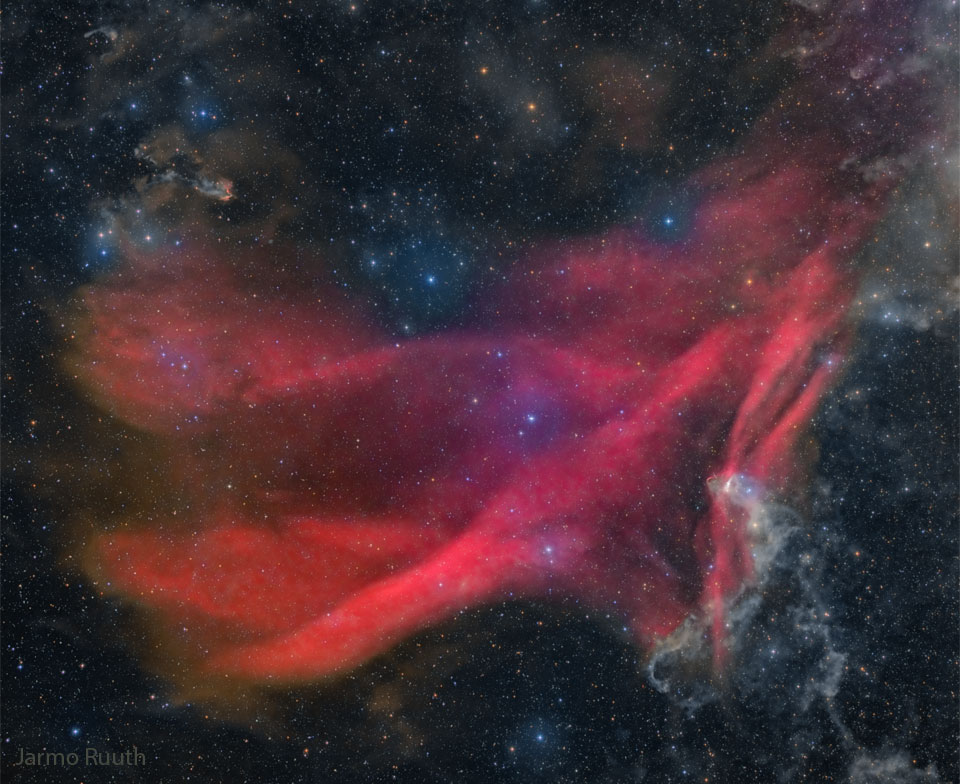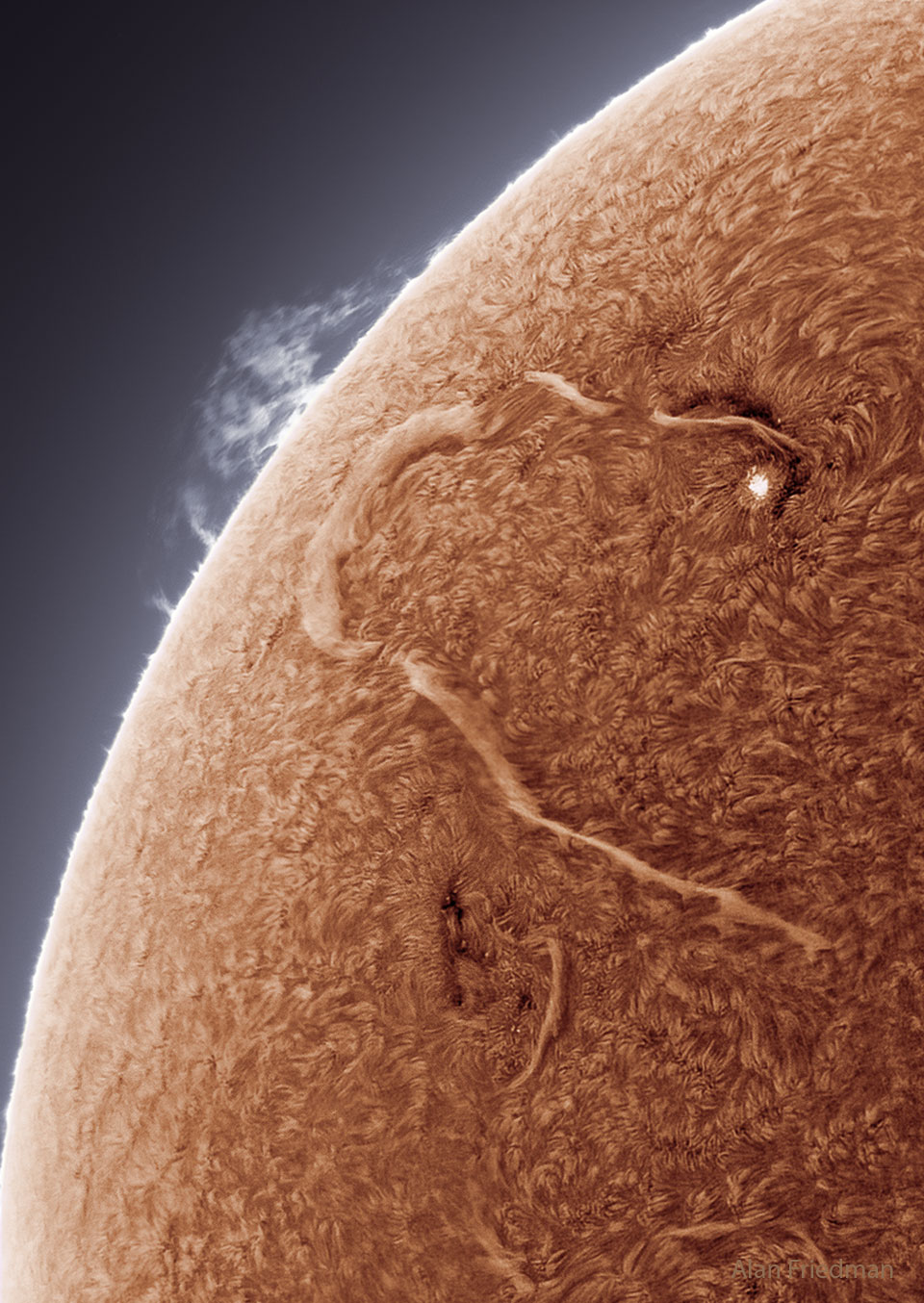안녕하세요, 잡학다식 입니다. 오늘은 과연 나사에서 어떤 방식으로 우주의 형상을 표현해 줄까요?
우선 이미지부터 볼 수 있도록 하겠습니다

해당 사진의 이름은 Waves of the Great Lacerta Nebula 인데요 우선 NASA에서 공식적으로 발표한 설명들을 확인해 보겠습니다
It is one of the largest nebulas on the sky -- why isn't it better known? Roughly the same angular size as the Andromeda Galaxy, the Great Lacerta Nebula can be found toward the constellation of the Lizard (Lacerta). The emission nebula is difficult to see with wide-field binoculars because it is so faint, but also usually difficult to see with a large telescope because it is so great in angle -- spanning about three degrees. The depth, breadth, waves, and beauty of the nebula -- cataloged as Sharpless 126 (Sh2-126) -- can best be seen and appreciated with a long duration camera exposure. The featured image is one such combined exposure -- in this case 10 hours over five different colors and over six nights during this past June and July at the IC Astronomy Observatory in Spain. The hydrogen gas in the Great Lacerta Nebula glows red because it is excited by light from the bright star 10 Lacertae, one of the bright blue stars just above the red-glowing nebula's center. The stars and nebula are about 1,200 light years distant. Harvest Full Moon 2022: Notable Submissions to APOD
이번에도 광활한 우주 앞에 인간이 얼마나 작은 존재인지 다시 한번 알게 되는것 같습니다
저는 내일도 더 좋은 사진과 함께 돌아오겠습니다, 그럼 행목한 하루 되시길 바랍니다
'과학상식' 카테고리의 다른 글
| NASA 나사의 오늘의 이미지들 (2022-09-16) (0) | 2022.09.17 |
|---|---|
| NASA 나사의 오늘의 이미지들 (2022-09-15) (0) | 2022.09.16 |
| NASA 나사의 오늘의 이미지들 (2022-09-13) (0) | 2022.09.14 |
| NASA 나사의 오늘의 이미지들 (2022-09-12) (0) | 2022.09.13 |
| NASA 나사의 오늘의 이미지들 (2022-09-11) (0) | 2022.09.12 |
